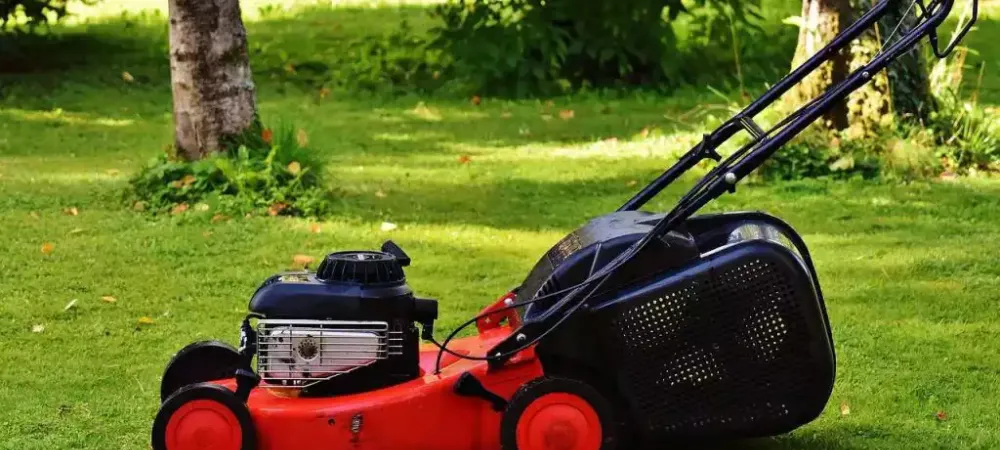Proper Mowing Techniques

Proper lawn mowing is a vital factor in creating and maintaining a lush, dense, and healthy lawn. In central Indiana, where the climate can be challenging, it is essential to pay attention to certain details when mowing. Here are some tips to help you achieve the best results.
Cutting Height
The ideal mowing height for most lawns in Indiana is 3 to 4 inches. This is usually not the setting on your mower, but 3 to 4 inches from the soil level. There are many benefits to mowing at these heights such as: root growth, which will allow the turf to be more drought tolerant; provide extra shade for the root systems, which conserves water and discourages weed growth; and by cutting higher the grass blades will have more leaf surface area for photosynthesis.
Frequency
Maintaining a proper mowing schedule is especially important. It is vital to remember that cutting too much at one time can stress your lawn, which can then cause your turf to be susceptible to disease. It is best to only remove 1/3 of the leaf blade at each mowing (The 1/3 Rule), so in spring you may have to mow 2-3 times a week and then in the summer weekly to every other week.
Clippings
Grass clippings are great for your lawn. They quickly decompose and return valuable nutrients to the soil. We recommend leaving clippings on your lawn, they will act as a natural fertilizer and help to keep your lawn healthy. Additionally, leaving the clippings on the lawn will save you the time and effort of having to dispose of them. The only times you should remove the lawn clippings is if your lawn has a disease or if there is an excessive amount of clippings after cutting that cover the turf, which if you are following the 1/3 rule that will not be a problem.
Sharp Mower Blades
A sharp mower blade is essential. A dull mower blade will tear the turf instead of cutting it cleanly, which can leave your lawn looking ragged and stressed. Not only that, but a dull mower blade can also damage the turf by creating jagged edges, which are more prone to disease and pests. Sharpen your mower blade at least once a year, or more often if you mow frequently.
Pattern
Varying your mowing direction is important. Mowing in the same direction every time can cause the grass to lean in one direction and create ruts. To prevent this, it is best to alternate the direction you mow each time you mow your lawn. This will help your lawn grow in a more balanced way and avoid damage from ruts.
Timing
The best time to mow your lawn is early in the morning or late in the evening when the sun is not at its strongest. Mowing during the heat of the day can stress your turf and make it more susceptible to disease. Additionally, it is better to avoid mowing when the turf is wet. It can cause the clippings to clump, and the blades do not cut as well when the turf is wet. Mowing when the turf is wet will cause your mower blades to dull out faster. The weight of the mower can also cause compaction if the soil is soggy. The best thing to do is wait for the turf to dry before mowing.
String Trimming/Edging
More than likely, you are string trimming around the edges of your home, landscaping, trees, and other obstacles. Always string trim at the 3–4-inch recommended height. The taller the better. Most weeds will germinate along the edges because of the transfer from turf to other surfaces and then radiant heat from brick, concrete, pavement, or rock. This makes it difficult for the turf to thrive and these areas are called hot spots. When edging along a driveway, road, or sidewalk (hot spots), make sure to stay as close to the hard surface as possible and not to get out in the lawn to expose the soil. Exposing the soil will cause weed growth. The less exposure to the soil the less weeds you will have germinate.
Conclusion
Using proper mowing practices and techniques will enhance the beauty and overall health of your lawn. Paired with a regular treatment program and proper irrigation practices, your lawn will be in a position to be lush, dense, and healthy all season long. If you're looking to take your lawn to the next level, contact Pro-Turf Indiana!
